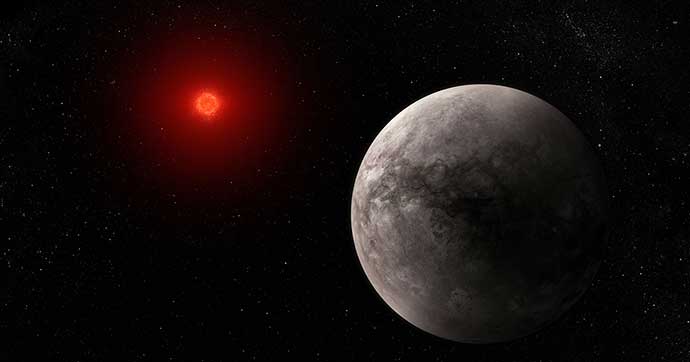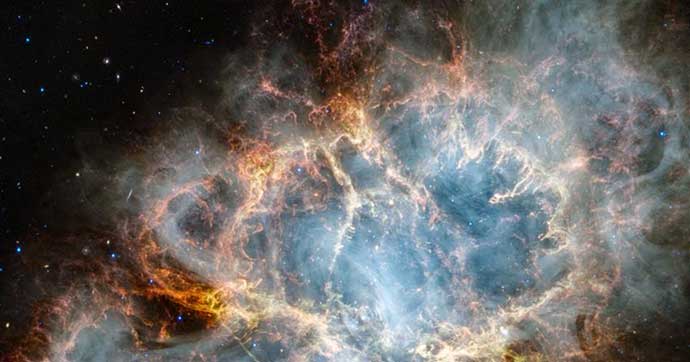Astronomy satellites and telescopes
It is often said that space is cold and empty. However, some structures of the universe reach particularly high temperatures. Over the past few decades, Canada has made significant advances that have changed our understanding of the universe. The study of massive stars, black holes, galaxy clusters, and cosmic radiation has offered much insight into the birth of our galaxy.
What's new?
The various types of astronomy satellites and telescopes
Inactive Canadian satellite
BRITE

Characteristics: Canadian satellite, inactive
The six nanosatellites, launched on , studied the brightest stars in the night sky. Canada was a partner in this mission with Austria and Poland. It funded two of the six satellites.
The constellation was able to:
- study the "twinkling" of stars in our galaxy
- analyze the true vibrations of stars
- measure the brightness variation of bright stars
International satellites to which Canada has contributed
Ariel

Characteristics: Canadian elements, in development
Ariel is a European Space Agency-led mission that will observe and characterize more planets beyond our solar system than ever before. It is scheduled to launch in .
Canada's participation involves:
- contributing components called cryoharnesses, which are crucial electrical data cables
AstroSat

Characteristics: Canadian elements, active
The Indian Space Research Organisation's first astronomical observatory was launched on . It is used to study hot, high-energy celestial bodies, such as young stars and black holes. Canada contributed three sensitive detectors to the Ultra Violet Imaging Telescope (UVIT).
The objectives of the AstroSat mission are to:
- understand high-energy activity in the star systems of our galaxy
- estimate the intensity of the magnetic fields of neutron stars
- detect new sources of brief, bright X-ray light
- measure how often new stars are formed
James Webb Space Telescope

Characteristics: Canadian elements, active
The James Webb Space Telescope was launched on . It is the most complex and powerful space telescope ever built. Canadian scientists are participating in this mission, which could change our understanding of the universe.
Canada contributed the following to the mission:
- a science instrument that will help study several types of celestial bodies, e.g., exoplanets and distant galaxies
- a fine guidance sensor
Planck

Characteristics: Canadian elements, inactive
The Planck telescope was launched on . It was the first European mission to study the birth of the universe. The telescope is the most sensitive ever designed for studying the cosmic microwave background left over from the Big Bang 13.8 billion years ago.
The Planck telescope was used to:
- measure the temperature of cosmic background radiation
- search for regions that are warmer or colder than average
XRISM

Characteristics: Canadian elements, in development
The Japanese observatory XRISM is scheduled to launch in . It will be used to study how galaxies form and stars burn out, two often violent phenomena that produce intense heat.
Canada's participation involves:
- testing two scientific instruments
- providing a synchrotron facility that can generate X-rays
Other inactive satellites
Hitomi (ASTRO-H)

Characteristics: Canadian elements, inactive
The Japanese observatory Hitomi was launched on . Shortly after its launch, the satellite started spinning on itself abnormally. Communication with the control centre in Japan was lost, and the mission had to be abandoned.
The satellite:
- was designed to study black holes and the remains of explosions of stars
- was equipped with four specialized X-ray telescopes and detectors
FUSE

Characteristics: Canadian elements, inactive
The FUSE telescope was launched on . It probed a region of the universe's electromagnetic spectrum that is out of reach to Earth-based telescopes. Canada provided the guidance sensor that stabilized and accurately guided the telescope.
The mission made it possible to study the following in the UV spectrum:
- white dwarfs
- quasars
- hot stars
MOST

Characteristics: Canadian elements, inactive
MOST was launched on . It was used to determine the age of stars in our galaxy.
The microsatellite's telescope was able to:
- conduct stellar measurements
- measure the oscillation in light intensity of stars
- determine the composition and age of stars



